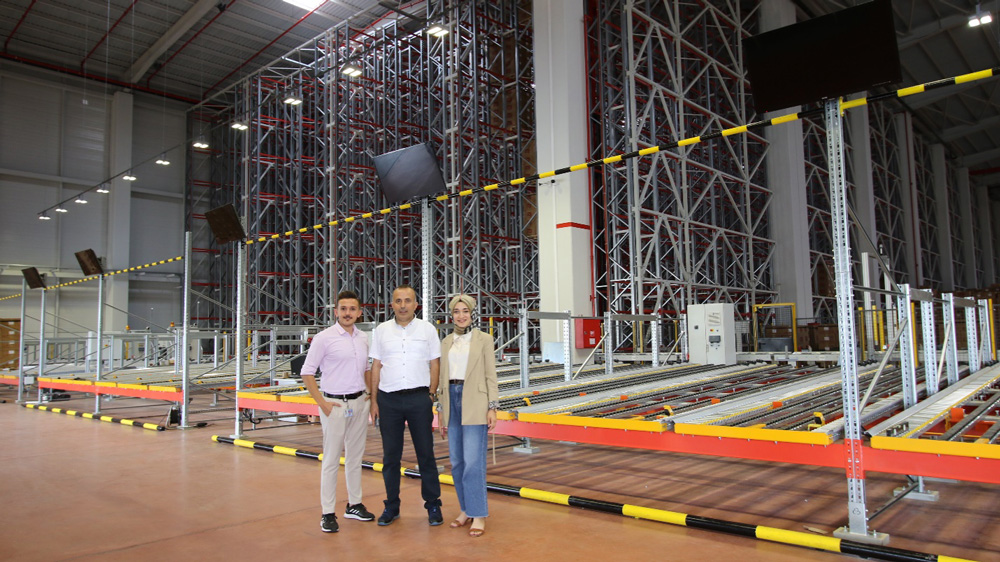
KORTEKS Before Automatic Warehouse Investment, Why Was There a Need for Simulation?
KORTEKS, one of the world's largest yarn producers, aims to make all its business processes suitable for digital transformation with industry 4.0. One of the projects identified to achieve this goal was to transform the product warehouse, which operates by stacking on the floor, into an intelligent warehouse using next-generation technologies. In the selection stage of the next-generation storage systems where there are multiple alternatives, KORTEKS wants to benefit from simulation analysis. The simulation model will show how much space and equipment each technology alternative will require based on production, inventory, and sales data. KORTEKS wants to conduct feasibility studies with simulation support to decide on the warehouse system that best suits its own operational mode.
Cemalettin Kaya, the Etude and Business Development Manager, expresses their preferences as follows;
“Businesses need to take steps parallel to their strategic goals to achieve sustainable competitive advantage. In this regard, every new facility or technology should not only serve today but also future scenarios. Any unforeseen complications during project planning and design can only be rectified at a very high cost in the future. Simulation tests the system at the design stage under every possible scenario and allows for the identification and resolution of issues in advance.”
Every step businesses take to ensure sustainable competitive advantage should be in line with their strategic goals. In this context, every new product or system developed should be able to serve the company's future scenarios. Unforeseen aspects of a system during its commissioning and design stage can lead to costly improvements in the future.
KORTEKS knew that the investment decision for the digital transformation of the storage process should be designed to fit its strategic growth goals. Therefore, during the project design phase, they needed a simulation study to test all system alternatives on the drawing board under different scenarios.
Factors Influencing KORTEKS's Choice of Dijitalis for Simulation Consultancy...
After a detailed evaluation, KORTEKS managers, who decided to work with Dijitalis, stated their reasons as follows; “We were very impressed by Dijitalis's different simulation software, the superiority of the technologies it offers, the experience of the consultants, and the past project references. Therefore, we believed that Dijitalis was capable of meeting the complex simulation analysis needs we needed in warehouse design process.”
Thanks to the simulation study, the warehouse project was designed in accordance with KORTEKS's sustainability policies. Decisions were made based on simulation analysis on issues such as the space requirement for the warehouse, the amount and arrangement of inventory on the shelves, and the time required to access the products in stock. Moreover, possible errors in the project design were minimized, and the system was commissioned correctly. Etude and Business Development Manager Cemalettin Kaya continued as follows;
“The simulation study we conducted with Dijitalis made our decision-making process easier and maximized our confidence in the process. Possible errors during the investment were minimized, and as a result, our automatic warehouse was commissioned correctly on the first attempt.”
Benefits Obtained from KORTEKS's Automatic Warehouse Project…
Today, machine and technology investments are projects that require large budgets. Simulating the situation after the project before the investment and observing the results will guide the decisions to be made about the project. Otherwise, the project may not reach the targeted performance immediately, and as complications arise over time, expectations will be met with design revisions. Rather than leaving the job to delays and unexpected costs, investment should be simulated, and actions should be taken with a great accuracy by foreseeing the situation after the project.
With the automatic warehouse investment, KORTEKS reduced warehouse space usage by 85% (from 26,000 square meters to 4,000 square meters). The product search time decreased by 97%, and the personnel responsible for product search operations were shifted to other work areas, increasing labor efficiency.

Cemalettin KAYA, who started working as an Electronic Maintenance Engineer at KORTEKS in 2000, is currently performing his duties and, together with his team, works to introduce new technologies to KORTEKS to make operations and processes more efficient.
